The most marketable athlete in the history of North American sports has been intertwined with the venerated Swoosh brand ever since he put pen to paper on a five-year, $2.5-million endorsement deal in 1984.
Mike and Nike’s relationship eventually birthed the iconic ‘Air Jordan’ sneakers, a landmark shoe that became a major status symbol in footwear and streetwear culture around the globe.
Nike’s ascendancy from Oregon-based shoe brand to multi-billion dollar apparel corporation coincided with His Airness rising to the summit of The Association.
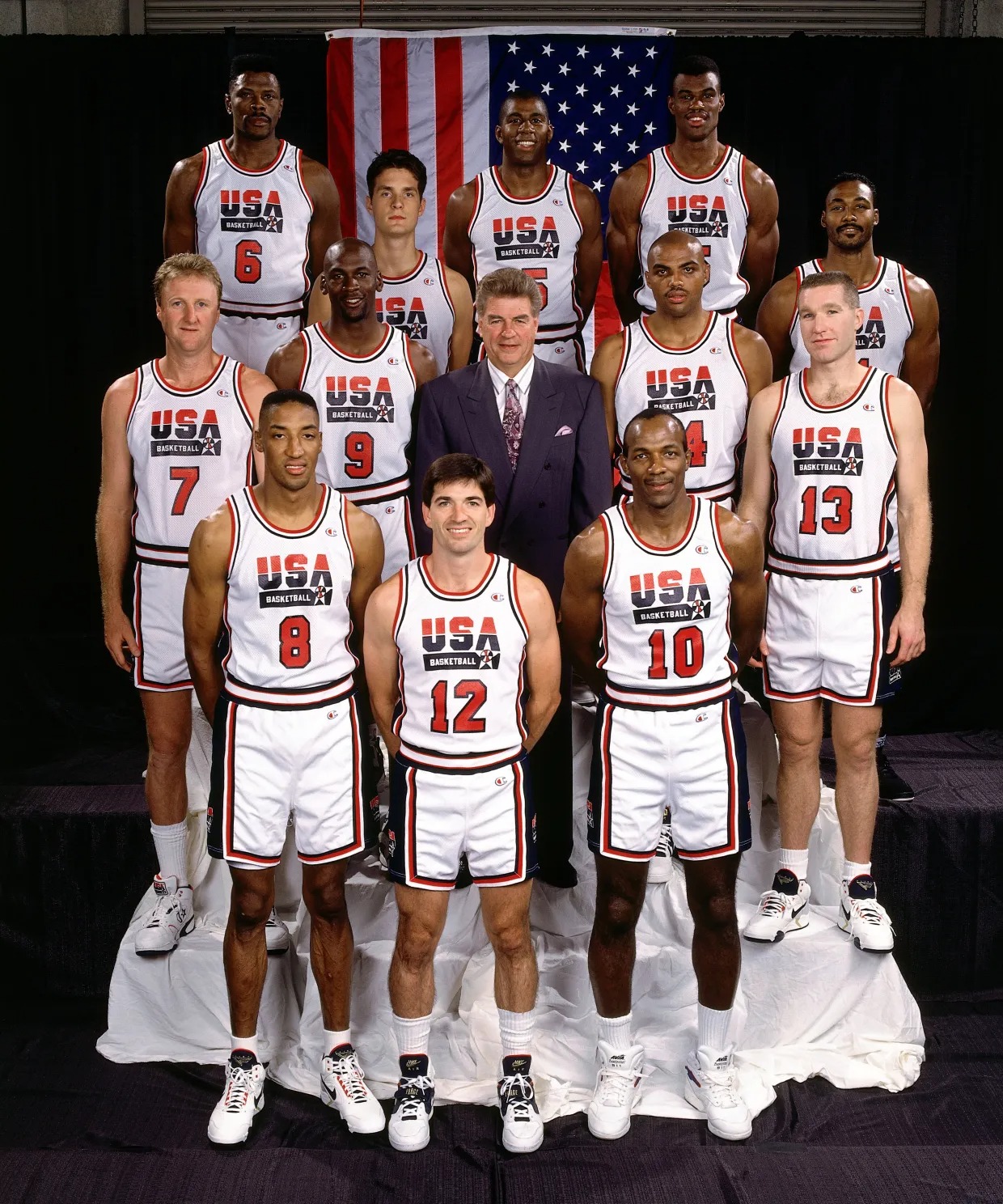
By 1992, two-time champion and two-time Finals MVP Jordan had surpassed Magic Johnson and Larry Bird as the undisputed face of the NBA, and was about to take his talents overseas.
NBA initially players weren’t allowed to participate in the Olympics, but that all changed in 1989 when FIBA removed the rule.
So, in 1992, Team USA head coach Chuck Daily assembled an Avengers-esqe squad bursting with NBA talent that was tasked with one simple goal: winning an Olympic gold medal.
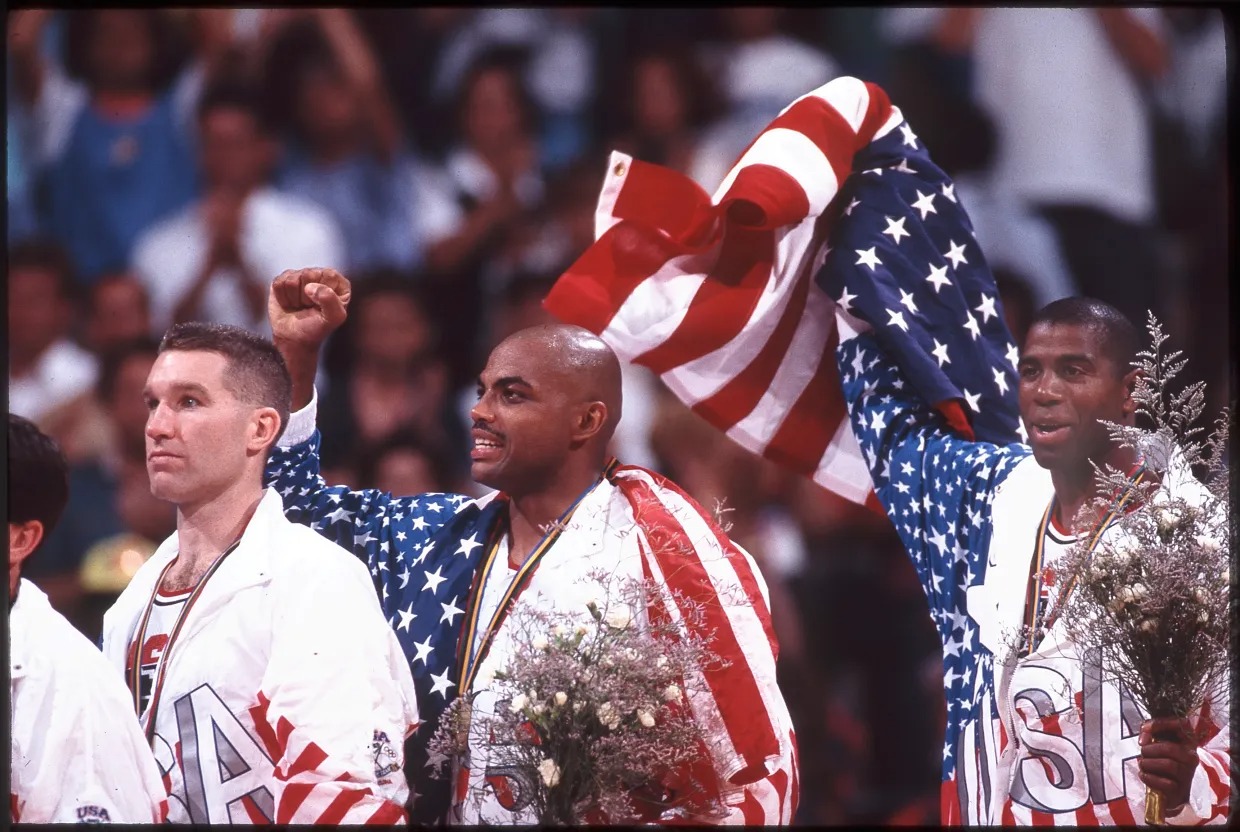
Jordan, Magic and Bird were joined by fellow Hall of Famers Charles Barkley, David Robinson, Karl Malone, and Patrick Ewing, among others, who descended on Barcelona, Spain with Beatles-like fanfare and with the mission of putting on a basketball clinic.
The star-studded squad was aptly named the Dream Team because of their ethereal talents, and they predictably stomped on every team who dared to step in their way.
The consensus greatest sports team ever assembled were unbeaten en route to the gold medal that summer, averaging more than 117 points per game and winning by an average margin of 44 points.

Team USA defeated Croatia 117-85 in the gold medal game and Nike ambassador Jordan was suddenly faced with a difficult dilemma.
Brand rival Reebok had secured exclusive rights to produce warm-up outfits and other apparel for American athletes, including Dream Team members, at the ’92 Olympics.
Reebok reportedly paid $4 million for the rights to Team USA’s medal stand jackets and the US Olympic Committee made it clear that winners had to accept medals while wearing jackets emblazoned with the Reebok logo.
“[They] said if we don’t wear our uniforms, we can’t accept our gold medal,” Jordan said at the time.
But it wasn’t just MJ’s brand loyalties that were about to be tested.
Of the 12 Dream Team members, none were Reebok endorsers, while six, including Jordan and Barkley, were Nike athletes. US co-captains Magic and Bird were longtime Converse advocates.
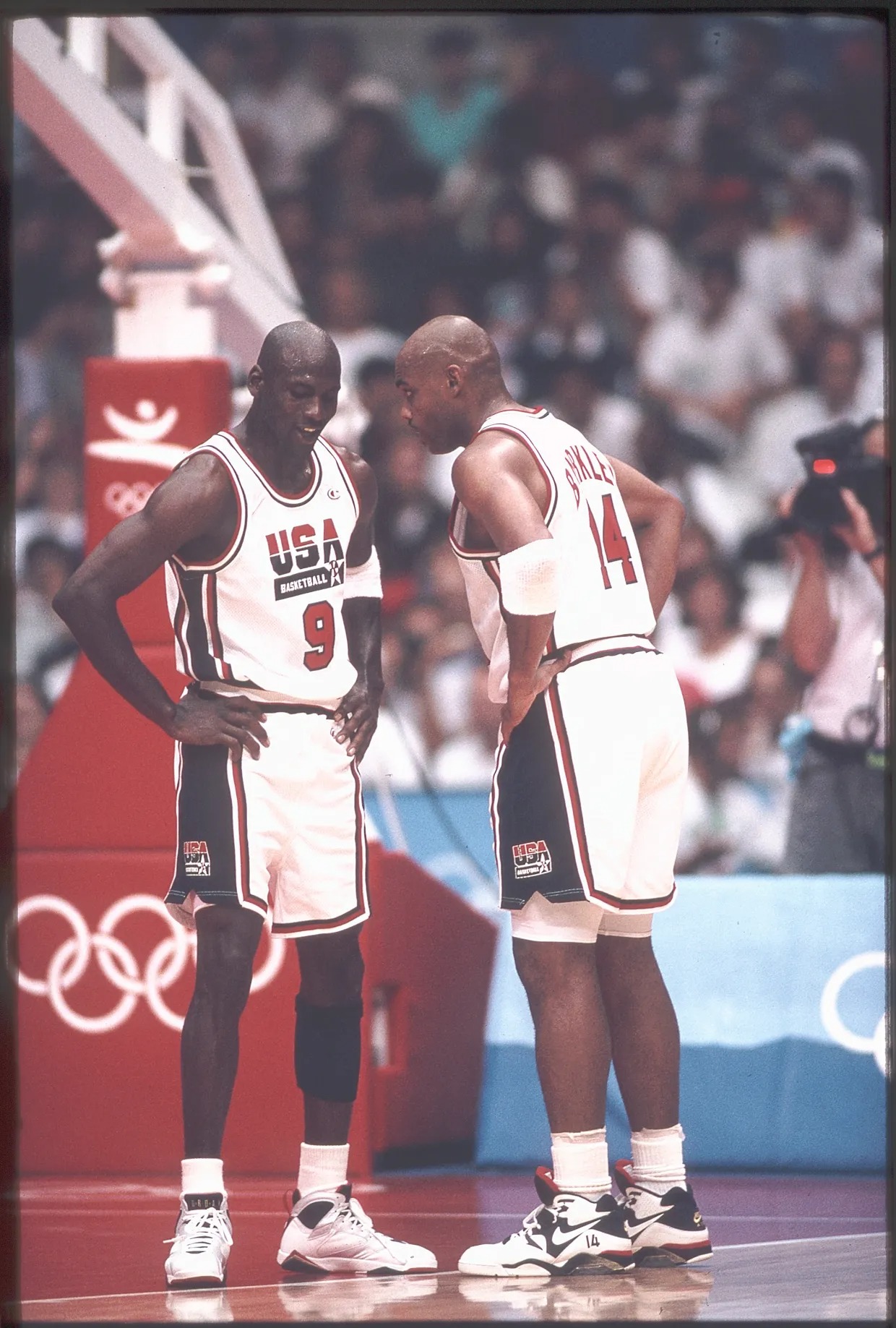
Something had to give, and it was increasingly apparent that none of the players were about to jeopardize highly lucrative sponsorship deals by rocking a rival brand in front of millions of eyes.
And so, as they went up to the podium to receive their gold medals, all 12 Dream Team players unzipped their jackets so that the collars obscured the Reebok sponsor patch.
Jordan, the trailblazer that he is, went one step further. The Chicago Bulls legend covered the Reebok logo on the right shoulder by draping himself in the red, white and blue of the American flag.
“They can’t hide it like I’m gonna hide it,” Jordan said. “They in for a big f***ing surprise.”
Barkley and Magic were the only other players who followed suit and covered the Reebok insignia with the American flag.
“Us Nike guys are loyal to Nike because they pay us a lot of money,” Sir Charles told reporters at the time. “I have 2 million reasons not to wear Reebok.”
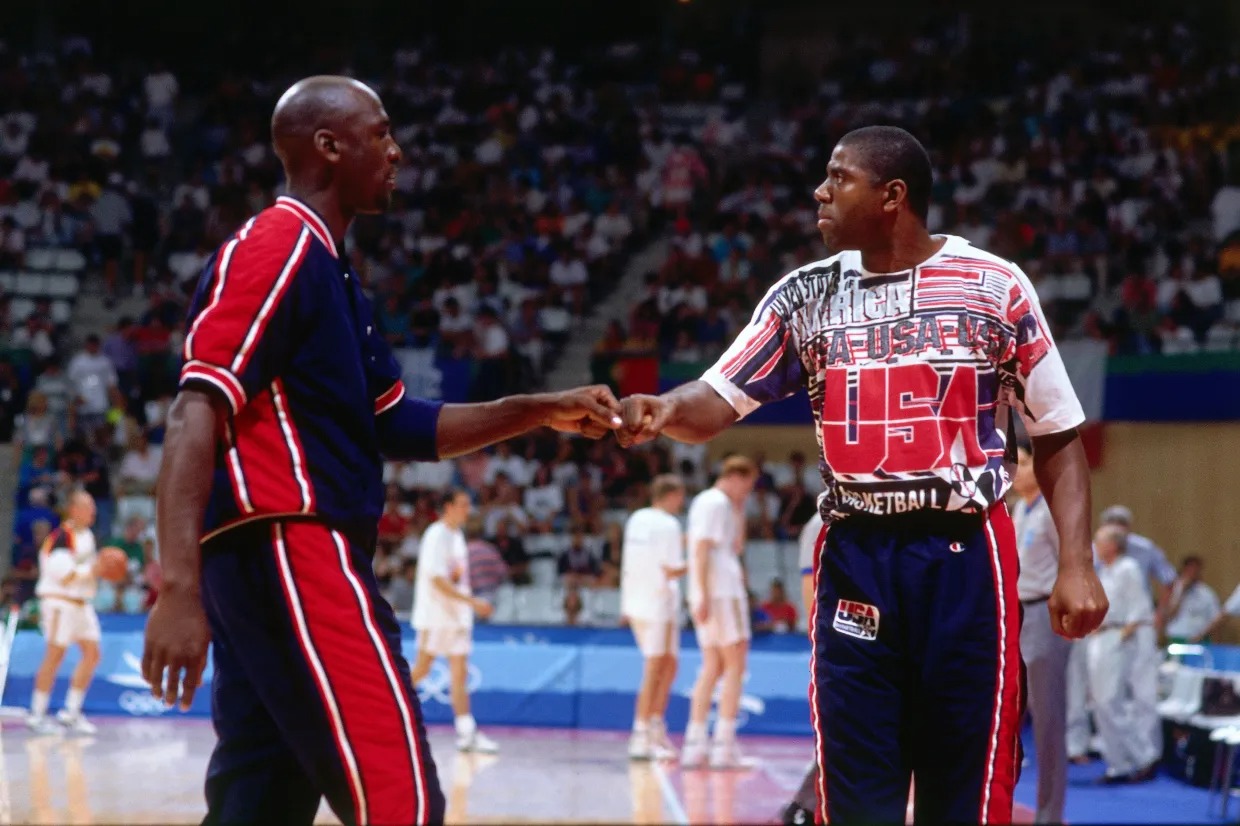
Jordan, Barkley, and Magic’s defiant stance worked like a charm. There wasn’t a Reebok patch in sight when The Star-Spangled Banner rang out around the Spanish arena.
Straight after the medal ceremony had taken place, Jordan tossed the Reebok jacket to Brian McIntyre, a member of the NBA’s public relations squad, telling him he could have it.
“I certainly don’t want it,” he told McIntyre.
McIntyre looked after the jacket – which has a patch that reads ‘Reebok is proud to honor America’s finest’ – for two years, thinking Jordan would eventually want it back.
In 1994, McIntyre bumped into MJ at an event and tried to hand the item back to him.
Instead, Jordan signed it: “To Brian, Thanks for Everything, Michael Jordan.”
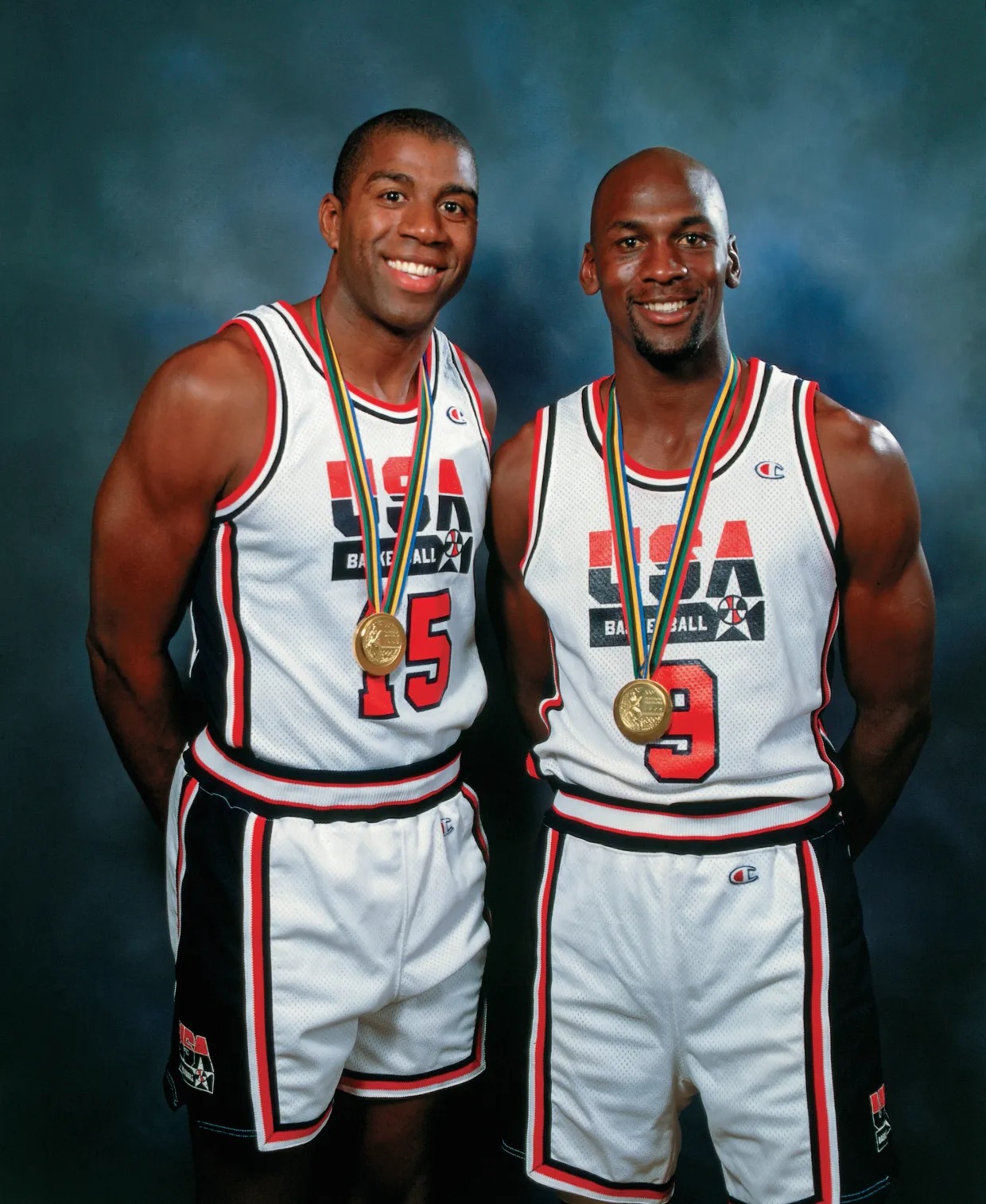
McIntyre kept the jacket for nearly 30 years. It remains a timeless piece of basketball memorabilia, and in 2023, sold through Sotheby’s for $1.5 million.
The jacket is so much more than ‘just’ a piece of memorabilia, though. It’s an important artefact that serves as a powerful reminder of the enduring strength of brand Jordan and his unparalleled impact on sports, fashion and culture.
“Everyone agreed we would not deface the Reebok on the award uniform,” Jordan said of the decision to cover up the jacket at the time.
“The American flag cannot deface anything. That’s what we stand for. The American dream is standing up for what you believe in. I believed in it, and I stood up for it. If I offended anyone, that’s too bad.
“When you hire 12 Clint Eastwoods to come in here and do a job, don’t ask them what bullets they’re putting in the gun.”